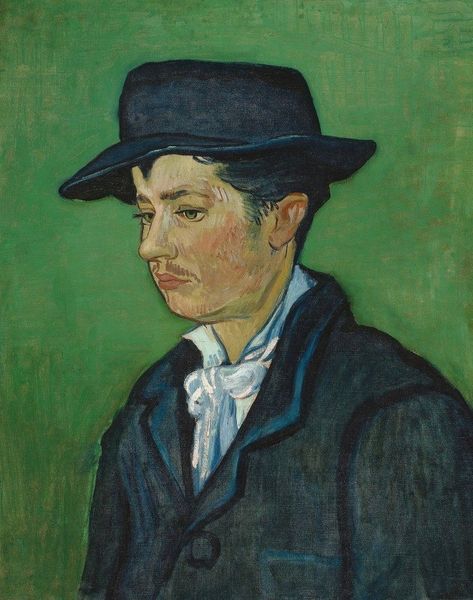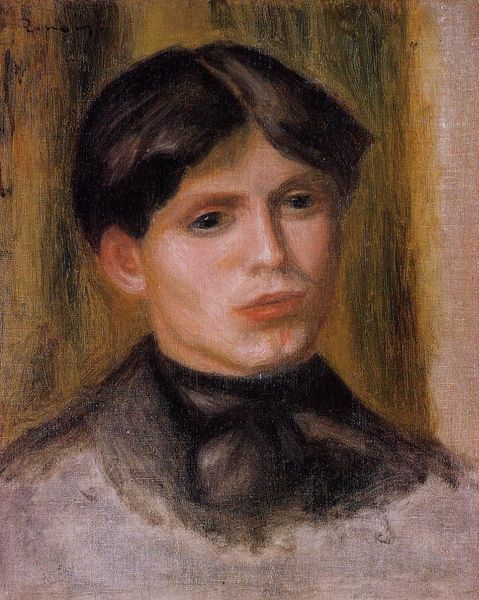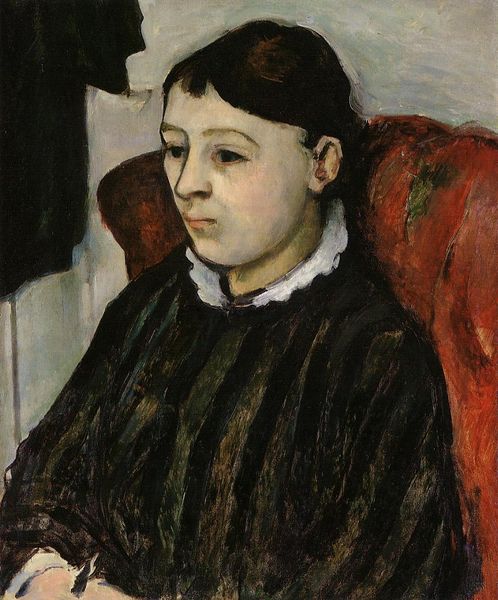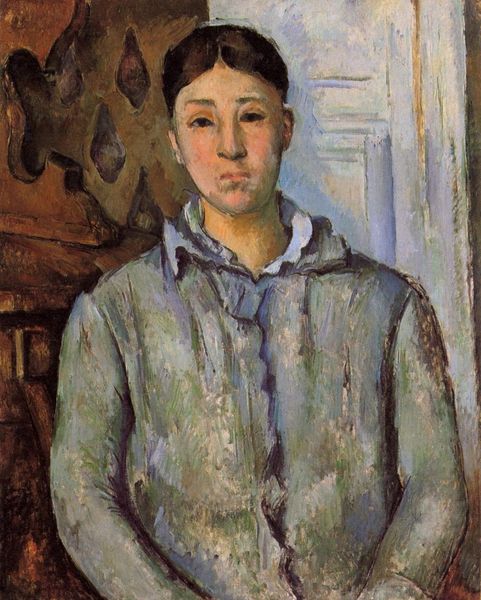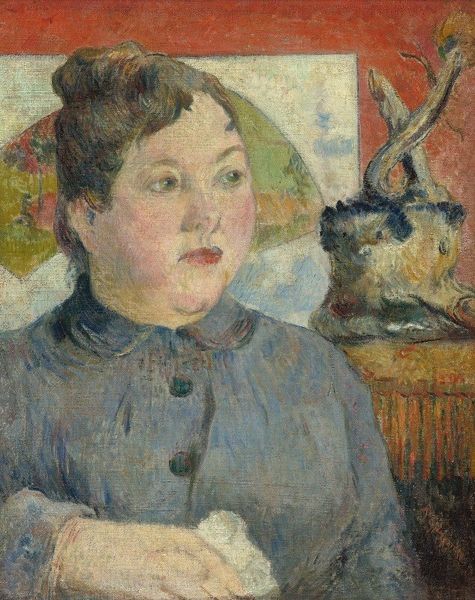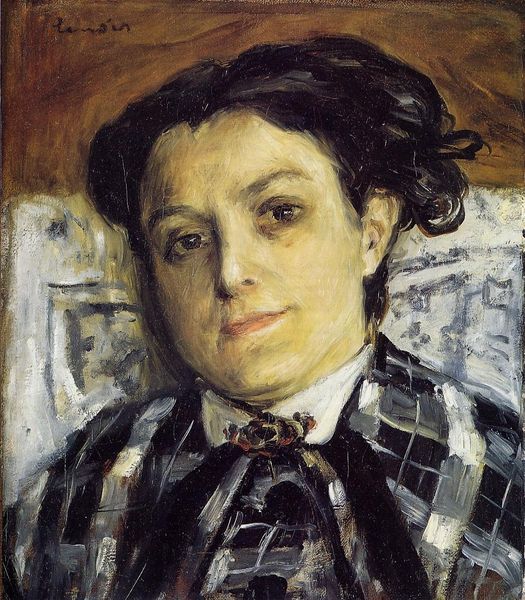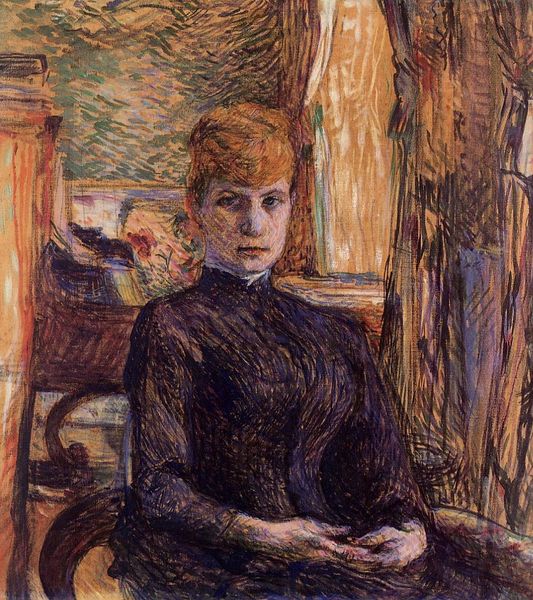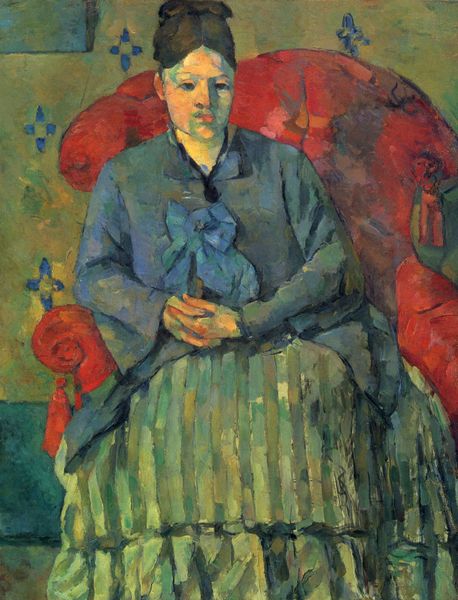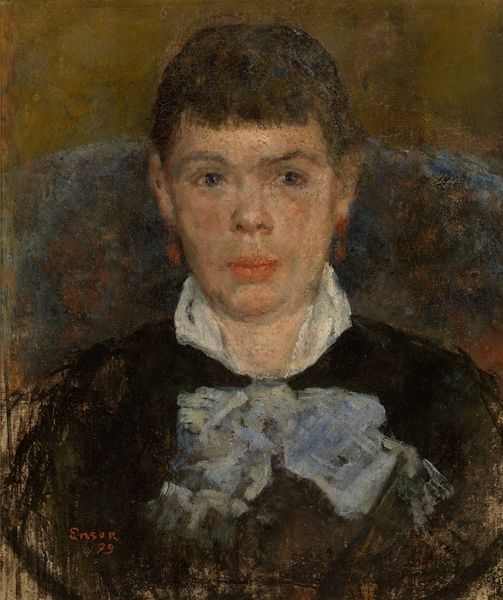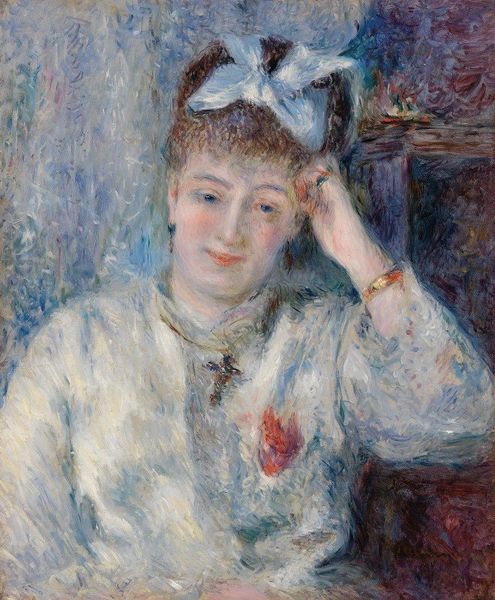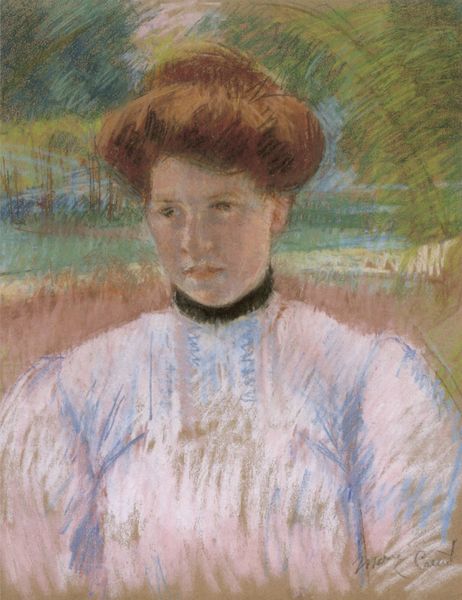
The boss's daughter 1886
0:00
0:00
paulgauguin
Le Prieuré (Musée départemental Maurice-Denis), Saint-Germain-en-Laye, France
painting, oil-paint
#
portrait
#
painting
#
impressionism
#
oil-paint
#
oil painting
#
cityscape
#
post-impressionism
Dimensions: 55.3 x 46 cm
Copyright: Public domain
Paul Gauguin created this oil-on-canvas artwork in 1886. This painting, titled "The Boss's Daughter," captures a moment of bourgeois life in late 19th-century France. Gauguin, known for his later rejection of European society and embrace of Polynesian culture, here provides a glimpse into the social milieu he was attempting to escape. The painting’s title suggests a commentary on social status and perhaps the economic structures that defined French society at the time. The woman's direct gaze and the artist's rendering of her clothing and the domestic setting subtly convey messages about class and gender roles. It could be argued that Gauguin is critiquing the very society that provided his artistic patronage, challenging its values through the act of painting. To fully understand this work, one might delve into studies of 19th-century French social history, examining economic conditions, gender studies, and the history of art institutions. The interpretation of art is always contingent on the social and institutional context in which it was created and received.
Comments
No comments
Be the first to comment and join the conversation on the ultimate creative platform.

